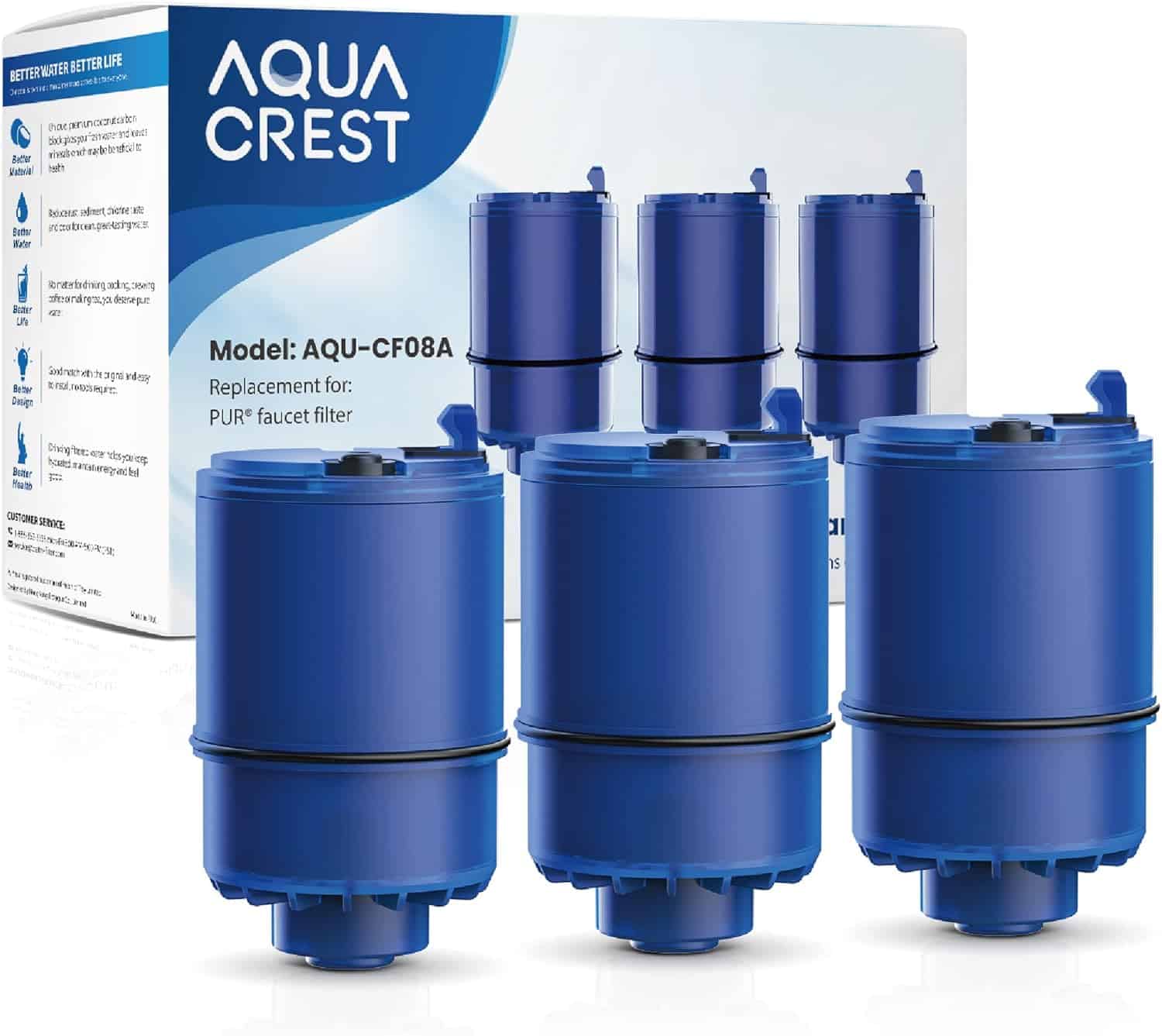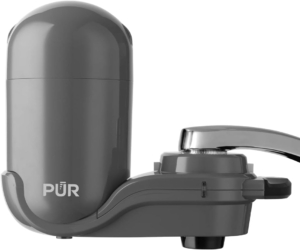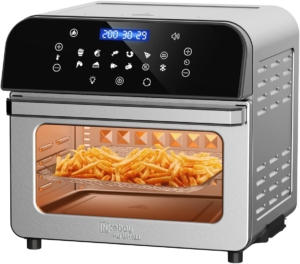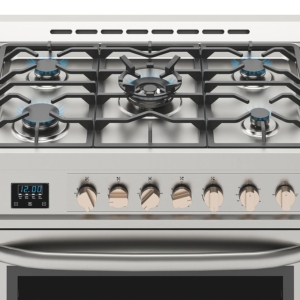A Guide to Choosing A Kitchen Range for Your Home
When it comes to designing the heart of your home, the kitchen, selecting the right appliances can make a big difference. One of the most vital appliances is your kitchen range. It’s more than just a cooking tool; it’s the centerpiece of your culinary space. This guide will provide tips on choosing the perfect kitchen range for your home.
Whether you’re a seasoned home cook or a beginner, the right range can elevate your cooking experience. But, with so many options available, how do you make the right choice? This guide will help you navigate the process, ensuring you make a choice that best fits your needs.
First, we will explore the types of ranges available, then delve into the features you might want to consider. We’ll also discuss factors like size, energy source, and budget. By the end, you’ll have a clear idea of what to look for in the perfect kitchen range for your home.
Remember, the perfect range for you depends on your specific needs and preferences. This guide is designed to help you understand what’s out there so you can make an informed decision. Let’s dive in!
Factors to Consider When Choosing a Kitchen Range
Size and Space Requirements
One of the first things to consider is the size and space requirements for your kitchen range. Measure the available space in your kitchen to ensure a proper fit. Consider the width, height, and depth of the range, as well as any additional clearance needed for ventilation. It’s essential to have enough space for the range to function properly and for you to move around comfortably while cooking.
Fuel Type
The fuel type is another significant factor to consider when choosing a kitchen range. There are three main options: gas, electric, and dual fuel. Gas ranges offer instantaneous heat control and are preferred by many professional chefs. Electric ranges, on the other hand, provide even heating and are easy to clean. Dual fuel ranges combine the best of both worlds, with a gas cooktop and an electric oven. Consider your cooking preferences, energy costs, and availability of fuel sources when making this decision.
Cooking Style and Needs
Your cooking style and needs should also influence your choice of kitchen range. Think about the types of dishes you frequently prepare and the features that would make your cooking experience more enjoyable. For example, if you love baking, look for a range with a convection oven that evenly circulates heat. If you often cook large meals, having multiple burners or a double oven might be beneficial. Consider the features that align with your cooking style to enhance your culinary adventures.
Budget
Lastly, your budget plays one of the biggest roles in determining the right kitchen range for you. Kitchen ranges come in a wide range of prices, so it’s important to set a budget before you start shopping. Remember that more expensive doesn’t necessarily mean better. Set your budget based on your needs and prioritize the features that matter most to you. With careful research and comparison, you can find a kitchen range that fits both your needs and your budget.
When choosing a kitchen range, it’s important to consider the size and space requirements, fuel type, cooking style and needs, and budget. By carefully evaluating each of these factors, you can find the perfect kitchen range that enhances your cooking experience and complements your home. Stay tuned for the next section where we delve into more aspects of selecting the ideal kitchen range for your home.
Types of Kitchen Ranges
Gas Ranges
Gas ranges have long been a favorite among professional chefs and cooking enthusiasts. They offer precise temperature control and instant heat, allowing for quick adjustments while cooking. Gas ranges are also known for their ability to evenly distribute heat, resulting in more even cooking. Additionally, gas ranges provide a visual flame that can be used to gauge the intensity of the heat.
One of the main advantages of gas ranges is their responsiveness. When you turn the knob, the flame immediately adjusts to the desired level, giving you greater control over the cooking process. Gas ranges also excel in broiling, as they provide intense heat from the top of the oven.
Electric Ranges
Electric ranges, on the other hand, have their own unique benefits. They are generally more affordable than gas ranges and are often preferred by those who do not have access to a gas line in their homes. Electric ranges are also known for their smooth and easy-to-clean cooktops, which are usually made of glass-ceramic.
One of the advantages of electric ranges is the consistent heat they provide. Unlike gas ranges, which may have hot spots due to the flame, electric ranges distribute heat evenly across the entire cooking surface. Electric ranges are also known for their precise temperature control, making them ideal for tasks that require precise cooking temperatures.
Dual Fuel Ranges
If you can’t decide between a gas range and an electric range, a dual fuel range might be the perfect solution for you. Dual fuel ranges combine the best of both worlds by offering a gas cooktop and an electric oven. This means you can enjoy the benefits of gas cooking on the stovetop while still having the consistent and precise heat of an electric oven.
Dual fuel ranges are popular among serious home cooks and bakers who value the versatility and performance that each fuel type offers. With a dual fuel range, you can achieve the best results when cooking a variety of dishes, from searing steaks on the gas burner to baking delicate pastries in the electric oven.
Induction Ranges
Induction ranges are a newer technology that have gained popularity in recent years. Instead of using traditional heating elements, induction ranges utilize electromagnetic fields to heat the cookware directly. This results in incredibly fast and efficient cooking, as the heat is generated directly in the pan.
One of the main advantages of induction ranges is their speed. They can bring a pot of water to boil much faster than gas or electric ranges. Induction ranges also offer precise temperature control, similar to electric ranges, and are known for their safety features, as the surface remains cool to the touch during cooking.
Features to Look for in a Kitchen Range
When it comes to choosing the perfect kitchen range for your home, there are several important features to consider. A kitchen range is a significant investment, so it’s crucial to select one that meets your cooking needs and preferences. In this section, we will explore the key features to look for in a kitchen range, including cooktop configuration, oven features, control options, and safety features.
Cooktop Configuration
The cooktop configuration is an essential aspect to consider when selecting a kitchen range. It determines the number and type of burners or cooking zones available for your culinary adventures. Different cooktop configurations offer various benefits, so it’s crucial to choose one that aligns with your cooking style.
Some common cooktop configurations include:
- Four-Burner Cooktop: This traditional configuration is ideal for small to medium-sized households. It provides enough space for pots and pans of different sizes, allowing you to prepare multiple dishes simultaneously.
- Five-Burner Cooktop: If you frequently cook large meals or enjoy experimenting with recipes that require multiple cooking methods simultaneously, a five-burner cooktop might be the right choice for you. It offers an additional burner for increased flexibility and convenience.
- Induction Cooktop: Induction cooktops use electromagnetic fields to heat up the cookware directly, resulting in faster and more precise cooking. They are energy-efficient, easy to clean, and provide excellent temperature control.
Oven Features
The oven is the heart of your kitchen range, and its features can greatly enhance your cooking experience. When evaluating oven features, consider the following:
- Capacity: The oven’s capacity determines how much food you can cook at once. If you frequently cook for large gatherings or have a big family, opt for a range with a spacious oven.
- Convection Cooking: Convection ovens have a fan that circulates hot air inside, ensuring even heat distribution and faster cooking times. This feature is especially useful for baking and roasting.
- Self-Cleaning Technology: Cleaning the oven can be a tedious task. Look for a kitchen range with a self-cleaning feature that uses heat or steam to remove grease and grime, making maintenance a breeze.
Control Options
The control options of a kitchen range can significantly impact your cooking experience. Here are some control features to consider:
- Digital Controls: Digital controls are user-friendly and provide precise temperature adjustments. They often come with preset cooking modes and timers, making it easier to achieve consistent results.
- Knob Controls: Knob controls offer a tactile experience and allow for quick adjustments while cooking. They are intuitive, easy to use, and provide a traditional feel in the kitchen.
- Touchpad Controls: Touchpad controls offer a sleek and modern look. They are responsive, easy to clean, and often feature additional functions like delay start and child lock for added convenience and safety.
Safety Features
Safety should always be a top priority when choosing a kitchen range. Look for the following safety features:
- Automatic Shut-Off: This feature automatically turns off the oven or cooktop after a certain period of inactivity, reducing the risk of accidents.
- Child Lock: A child lock feature prevents accidental operation of the range by locking the controls, ensuring the safety of curious little ones.
- Cool-Touch Surface: A cool-touch surface keeps the exterior of the range cool to the touch, minimizing the risk of burns when cooking at high temperatures.
Energy Efficiency and Sustainability
When it comes to choosing the perfect kitchen range for your home, energy efficiency and sustainability are two important factors to consider. Not only can an energy-efficient range help you save on your utility bills, but it also has a positive impact on the environment. In this section, we will explore the significance of Energy Star ratings and the environmental impact of kitchen ranges.
Energy Star Ratings
Energy Star ratings are an essential aspect to consider when selecting a kitchen range. This program, developed by the U.S. Environmental Protection Agency (EPA), aims to identify and promote energy-efficient appliances. Ranges with Energy Star ratings have been rigorously tested and meet specific criteria for energy efficiency.
An Energy Star rated range can offer several advantages. First, it consumes less energy, resulting in lower electricity or gas bills. By using less energy, these ranges reduce greenhouse gas emissions, minimizing their impact on climate change. Additionally, an energy-efficient range often comes with advanced features such as improved insulation, precise temperature control, and even self-cleaning options. These features not only enhance convenience but also contribute to energy savings.
When shopping for a kitchen range, keep an eye out for the Energy Star label. It signifies that the range has met the strict standards set by the EPA and can help you make an environmentally friendly choice for your home.
Environmental Impact
The environmental impact of kitchen ranges extends beyond energy consumption. Several factors come into play when assessing sustainability, such as materials used, manufacturing processes, and product lifespan.
Choosing a range made from eco-friendly materials can make a significant difference. Look for ranges made from recycled or sustainable materials like stainless steel or glass. These materials are not only durable but also reduce the reliance on non-renewable resources.
Manufacturing processes also play a crucial role in determining a range’s environmental impact. Some manufacturers prioritize sustainable practices, such as minimizing waste and using energy-efficient production methods. Researching brands that prioritize sustainability can help you make an informed decision.
Lastly, the lifespan of a kitchen range should be considered. Investing in a high-quality range that is built to last can reduce waste in the long run. It’s worth considering ranges with warranties, as they demonstrate the manufacturer’s confidence in the product’s durability.
Maintenance and Cleaning Tips
Taking care of your kitchen range is essential to ensure its longevity and keep it functioning at its best. Regular maintenance and cleaning can prevent issues and make your cooking experience more enjoyable. In this section, we will provide you with some valuable tips on how to effectively clean and maintain your kitchen range.
Cleaning the Cooktop
The cooktop is the heart of your kitchen range, and it is prone to spills, grease, and stubborn stains. Cleaning it properly will not only keep it looking great but also prevent any potential fire hazards. Here are some steps to follow for a sparkling clean cooktop:
- Wipe up spills promptly: As soon as you notice any spills or splatters on the cooktop, wipe them up using a damp cloth or sponge. This will prevent them from hardening and becoming tougher to remove later on.
- Use a gentle cleaner: When it comes to cleaning the cooktop surface, avoid using harsh chemicals or abrasive cleaners, as they can damage the finish. Instead, opt for a mild cleaner specifically designed for cooktops, and follow the manufacturer’s instructions.
- Scrub with a non-abrasive sponge: For stubborn stains or dried-on food particles, use a non-abrasive sponge or scrubber. Gently scrub the affected area in circular motions to loosen the dirt, being careful not to scratch the surface.
- Remove grease with vinegar: Grease can be particularly challenging to remove from the cooktop. Create a solution of equal parts vinegar and water, and apply it to the greasy areas. Let it sit for a few minutes, then wipe it away with a clean cloth.
- Polish for a shine: Once you have cleaned the cooktop, give it a final polish using a microfiber cloth. This will remove any residue and leave your cooktop looking shiny and streak-free.
Cleaning the Oven
The oven is where the magic happens when it comes to baking and roasting delicious meals. To ensure your oven remains in top shape, regular cleaning is essential. Follow these steps to keep your oven spotless:
- Remove oven racks: Start by removing the oven racks and soaking them in warm, soapy water. This will help loosen any baked-on food or grease.
- Scrub the interior: Using a non-abrasive sponge or scrub brush, gently scrub the interior of the oven. Pay close attention to any stubborn stains or residue. For tough grease spots, try using a paste made from baking soda and water.
- Clean the oven door: The oven door can accumulate grease and grime over time. Wipe it down using a mixture of water and dish soap. For any stubborn stains, use a glass cleaner specifically designed for ovens.
- Wipe down the control panel: Don’t forget to clean the control panel of your oven. Use a soft, damp cloth to wipe away any dirt or spills. Avoid spraying directly onto the control panel to prevent water damage.
- Reassemble and dry: Once you have finished cleaning the oven racks and interior, rinse the racks thoroughly and dry them before placing them back inside the oven. This will prevent them from rusting or leaving marks on your next meal.
Regular Maintenance
In addition to regular cleaning, performing routine maintenance on your kitchen range is crucial for its overall performance and safety. Here are some maintenance tips to keep in mind:
- Inspect and clean the burners: Regularly check the burners for any clogs or blockages. If you notice any issues, use a toothpick or a small brush to remove any debris. Cleaning the burners will ensure proper gas flow and even heat distribution.
- Replace faulty parts: If you encounter any issues with your kitchen range, such as uneven cooking or malfunctioning controls, it may be time to replace faulty parts. Consult the manufacturer’s guidelines or seek professional assistance to ensure proper installation and compatibility.
- Check the seals and gaskets: Over time, the seals and gaskets on your kitchen range may wear out, leading to heat loss and reduced efficiency. Inspect them regularly and replace any damaged or worn-out seals to maintain optimal performance.
- Keep the exterior clean: Don’t forget to clean the exterior of your kitchen range regularly. Wipe it down with a damp cloth to remove any dust, grease, or fingerprints. This will not only keep it looking great but also prevent any buildup from affecting its performance.
Popular Kitchen Range Brands
1. Viking
Viking has established itself as a top-tier kitchen appliance brand known for its commitment to professional-grade performance and sophisticated design. With a history dating back to the 1980s, Viking ranges are favored by chefs and home cooks alike for their powerful burners, precise temperature control, and robust construction. Their ranges often feature innovative technology and a variety of sizes and configurations, catering to both residential and commercial kitchens.
2. Wolf
Wolf is synonymous with precision cooking and culinary excellence. Renowned for its high-performance ranges, Wolf offers a wide range of options to suit various cooking styles and preferences. Their dual-stacked burners provide consistent heat distribution, while advanced features like convection ovens and infrared broilers ensure even cooking results. The brand’s sleek and timeless designs add a touch of elegance to any kitchen.
3. GE Appliances
General Electric (GE) Appliances has been a household name for decades, offering a range of kitchen appliances, including their popular kitchen ranges. Combining reliability, innovation, and affordability, GE Appliances offers a diverse lineup of ranges that cater to different budgets and kitchen layouts. Their ranges come equipped with features like WiFi connectivity for remote control and monitoring, making them a tech-savvy choice for modern homes.
4. Samsung
Samsung, a leader in electronics, has ventured into the kitchen appliance market with a range of innovative offerings. Samsung ranges often come packed with advanced features like Flex Duo technology, allowing you to cook two dishes at different temperatures simultaneously. Their modern designs and touchscreen controls make for a seamless cooking experience, combining style and functionality.
5. KitchenAid
KitchenAid is a well-known brand synonymous with quality and durability. While it’s perhaps most famous for its stand mixers, KitchenAid also produces a range of kitchen appliances, including ranges. Known for their stylish designs and attention to detail, KitchenAid ranges offer features like Even-Heat True Convection for consistent cooking results. Their ranges are ideal for those who seek reliable performance with a touch of elegance.
6. Bosch
Bosch is a brand recognized for its German engineering and commitment to precision. Bosch ranges are designed to provide efficient cooking performance while conserving energy. Their ranges often include features like European convection ovens and powerful burners that offer a wide range of cooking options. With a minimalist and modern aesthetic, Bosch ranges seamlessly blend into various kitchen designs.
Conclusion
Choosing the perfect kitchen range for your home is a decision that should not be taken lightly. It is important to consider your cooking needs, kitchen space, and budget in order to make an informed choice. By following the steps outlined in this guide, you can ensure that you select a kitchen range that meets your requirements and enhances the functionality and aesthetics of your kitchen. Remember to consider the size, fuel type, features, and brand reputation when making your decision. Happy cooking!












